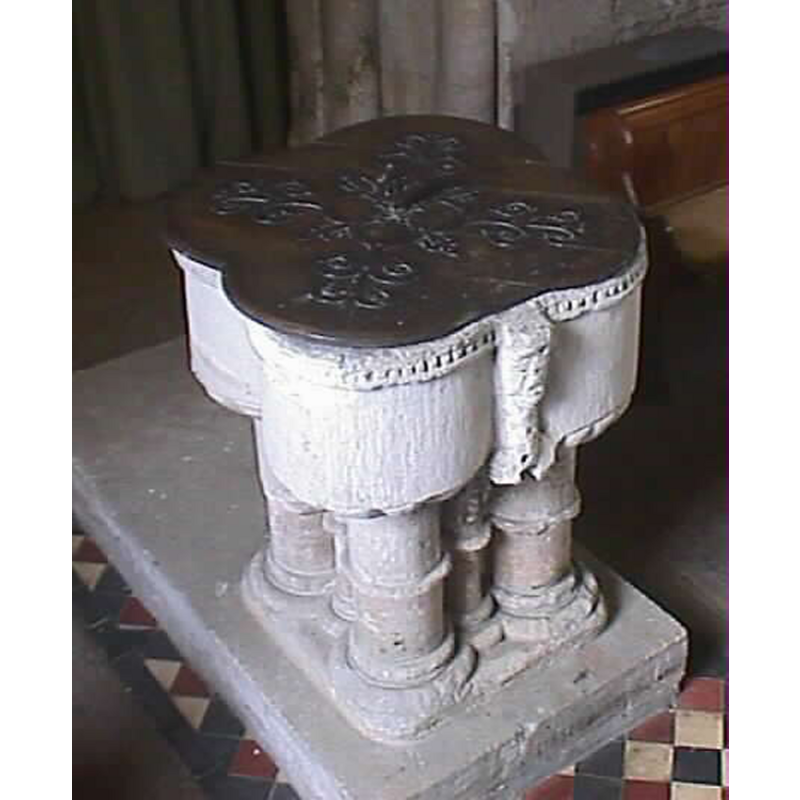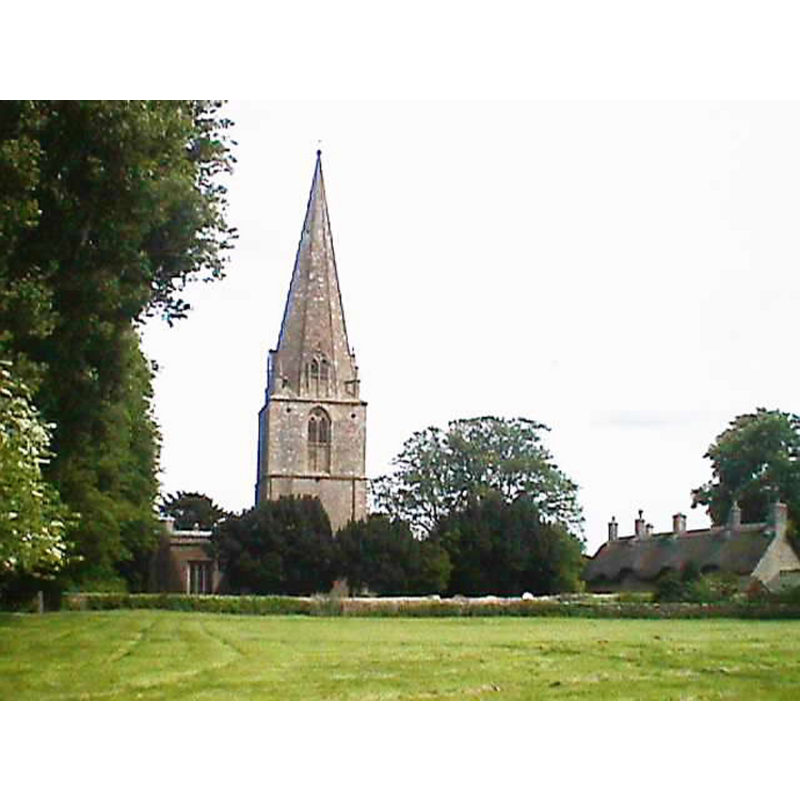Broadwell / Bradewelle / Broadwell nr. Carterton

Image copyright © John Wilkes, 2006
Standing permission
Results: 6 records
design element - motifs - moulding
design element - patterns - fretwork
Scene Description: a band of, all around the upper rim
Copyright Statement: Image copyright © Martin Beek, 2004
Image Source: digital photograph in FLICKR [www.flickr.com/photos/oxfordshire_church_photos] taken by Martin Beek 28 June 2004
Copyright Instructions: PERMISSION NOT AVAILABLE -- IMAGE NOT FOR PUBLIC USE
design element - patterns - ribbed
human figure - grotesque or fantastic? - head
Scene Description: between the two front lobes
Copyright Statement: Image copyright © Martin Beek, 2004
Image Source: digital photograph in FLICKR [www.flickr.com/photos/oxfordshire_church_photos] taken by Martin Beek 28 June 2004
Copyright Instructions: PERMISSION NOT AVAILABLE -- IMAGE NOT FOR PUBLIC USE
view of church exterior - west tower
INFORMATION
FontID: 11886BRO
Object Type: Baptismal Font1
Church/Chapel: Parish Church of St. Peter and St. Paul
Church Patron Saints: St. Peter & St. Paul
Church Location: Broadwell, Lechlade GL7 3QT, UK
Country Name: England
Location: Oxfordshire, South East
Directions to Site: Located off the B4477, 4-5 SW of Carterton
Ecclesiastic Region: Diocese of Oxford
Historical Region: Hundred of Bampton
Font Location in Church: Inside the church
Date: ca. 1200?
Century and Period: 12th - 13th century, Transitional
Cognate Fonts: Quatrefoil fonts at Westwell (Oxon.) and The Leigh (Wilts.). Replica font in Barnsley, Gloucs., at one time
Credit and Acknowledgements: We are grateful to John Wilkes, of www.allthecotswolds.com, for the photographs of this church and font.
Font Notes:
Click to view
There is an entry for this Broadwell [variant spelling] in the Domesday survey [http://opendomesday.org/place/SP2504/broadwell/] [accessed 15 January 2018], but it mentions neither priest nor church in it. The Ecclesiastical and Architectural Topography of England: Oxfordshire (1850) notes: "The font is very good late N[orman], with a large basin of the quatrefoil form with heads in the hollows, supported on four large shafts with scalloped capitals, and small shafts introduced between the large ones." Noted in Sherwood and Pevsner (1974): "Font. Of c.1200. Large bowl of quatrefoil shape with a border of nail-head and two lobes separated by a long carved head. The base is formed by a cluster of short columns with scalloped capitals." Baptismal consisting of a quatrefoil basin with vertical side, raised on a column cluster stem and a rectangular base and plinth; the upper rim of the basin is decorated with a band of fretwork; at the joining of the two lobes on the front of the basin is a head or figure, appears grotesque [the insertion of heads or figures in this position is common in some fonts from Navarra, Spain, e.g.: Elcano]; the four underbowls are decorated with ribbed pattern ornamentation; the columns of the stem have ring-mouldings at top centre and base. The wooden cover, also quatrefoil in shape appears 19th-century. The entry for Westwell, also in Oxfordshire, in the CRSBI states: "The font is clearly from the same workshop as the more elaborate version at Broadwell." Described as a "Saxon font" in the Historic Churches Preservation Trust, Recent Grants [...] 16 March 2006 [www.historicchurches.org.uk]. Verey & Brooks (1999-2002) note: "A copy of the Norman font at Broadwell, Oxfordshire, which found its way into Barnsley churfch for a few years, and was returned to its proper guardians in 1845." The Victoria County History (Oxon., vol. 17, 2012) notes: "Broadwell had an independent church by the mid 12th century and possibly much earlier [...] Broadwell had its own (apparently independent) church by the mid 12th century, when Alan de Limesy (d. by 1162), as lord of Broadwell, gave it to the Knights Templar with its glebe and tithes [...] The nave, chancel and lower two stages of the tower were probably built in the late 12th century after the Limesys' grant of the church to the Templars, but irregular masonry on the north and south chancel walls and around the tower arch may remain from an earlier building [...] The font, which has a quatrefoil bowl on clustered shafts with scallop capitals, is also late 12th-century [...] The church was much enlarged in the second half of the 13th century".
COORDINATES
Church Latitude & Longitude Decimal: 51.734149, -1.636492
Church Latitude & Longitude DMS: 51° 44′ 2.93″ N, 1° 38′ 11.37″ W
UTM: 30U 594157 5732350
MEDIUM AND MEASUREMENTS
Material: stone
Font Shape: quatrefoil (mounted)
Basin Interior Shape: quatrefoil
Basin Exterior Shape: quatrefoil
LID INFORMATION
Date: 19th-century?
Material: wood
Apparatus: no
Notes: quatrefoil and flat, with metal ornamentation and ring handle
REFERENCES
Victoria County History [online], University of London, 1993-. Accessed: 2018-01-15 00:00:00. URL: https://www.british-history.ac.uk.
Corpus of Romanesque Sculpture in Britain and Ireland, The Corpus of Romanesque Sculpture in Britain and Ireland, The Corpus of Romanesque Sculpture in Britain and Ireland. Accessed: 2006-05-30 00:00:00. URL: http://www.crsbi.ac.uk.
Parker, John Henry, The Ecclesiastical and architectural topography of England: Oxfordshire, Oxford, London: Published under the sanction of the Central Commitee of the Archaeological Institute of Great Britain and Ireland [by] John Henry Parker, 1850
Pevsner, Nikolaus, Oxfordshire, Harmondsworth: Penguin Books, 1974

